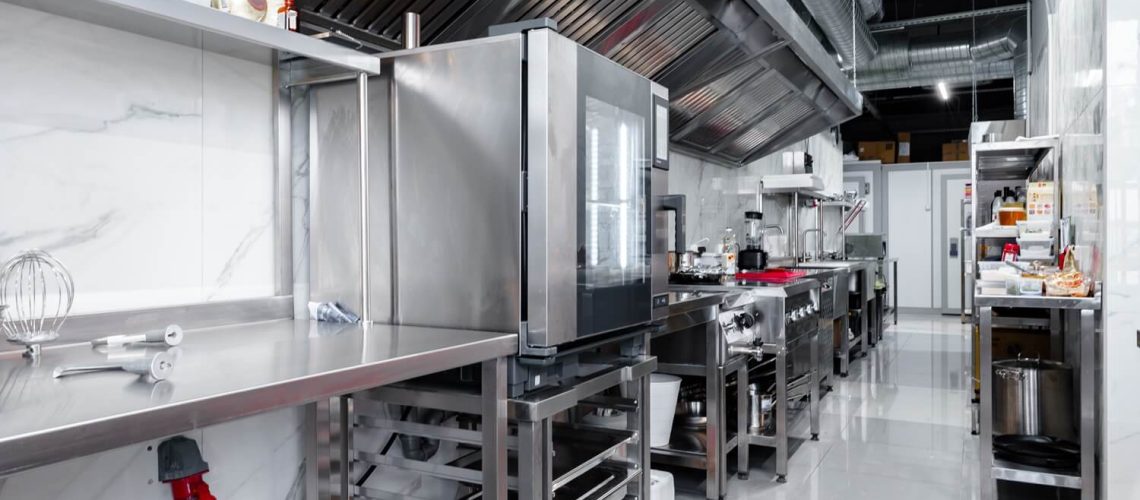The commercial kitchen environment is often characterized by intense heat, odors, and airborne particles that require efficient ventilation solutions. Proper ventilation is essential not only for maintaining a comfortable working environment but also for ensuring the safety and health of kitchen staff. Additionally, energy-efficient ventilation systems can significantly reduce operational costs and environmental impact.
The Importance of Efficient Kitchen Ventilation
Ventilation in commercial kitchens is needed for several reasons. It removes excess heat, steam, and cooking odors, which can affect both the kitchen environment and adjacent areas. Proper ventilation also ensures that harmful pollutants are removed from the air to safeguard the health of employees. Furthermore, an efficient kitchen ventilation system can lead to substantial energy savings, as it optimizes the use of heating, cooling, and exhaust mechanisms.
1. Health and Safety Considerations
Health and safety are a must in any commercial kitchen. Without adequate ventilation, kitchens can quickly become hazardous environments. Smoke, grease, and carbon monoxide are common byproducts of cooking that can pose significant health risks.
A well-designed kitchen exhaust system ensures these contaminants are effectively removed, maintaining air quality and preventing respiratory issues among staff.
Effective ventilation also reduces the risk of fire. Grease-laden vapors can accumulate in poorly ventilated spaces, increasing the likelihood of a fire. Regular maintenance and cleaning of kitchen air ventilators and exhaust systems are essential to prevent grease build-up and ensure they operate at peak efficiency.
2. Enhancing Energy Efficiency
Energy efficiency in commercial kitchens is not only environmentally responsible but also economically beneficial. Traditional ventilation systems can be energy-intensive, leading to high utility bills. Modern, sustainable kitchen ventilation systems incorporate advanced technologies that optimize energy use.
For example, demand-controlled ventilation (DCV) systems adjust airflow based on real-time cooking activity, reducing energy consumption when full ventilation is not necessary.
Heat recovery ventilators (HRVs) are another innovative solution. These systems capture waste heat from the exhaust air and use it to preheat incoming fresh air, significantly reducing the energy required for heating. Implementing these technologies can lead to substantial energy savings and a reduced carbon footprint.
Choosing the Right Ventilation System
Selecting the appropriate ventilation system for a commercial kitchen involves considering various factors such as kitchen size, layout, and cooking equipment. The right system will ensure optimal air quality while minimizing energy consumption.
Types of Ventilation Systems
Several types of ventilation systems are available for commercial kitchens, each with unique features and benefits. The most common include:
1. Canopy Hoods
These are typically installed above cooking appliances and are effective at capturing and containing steam, smoke, and grease. Canopy hoods should be matched with an appropriate kitchen exhaust system to ensure efficient removal of contaminants.
2. Ventilated Ceilings
These systems offer a more discreet and aesthetically pleasing option. They provide uniform air extraction across the entire kitchen ceiling, reducing localized hot spots and improving overall air quality.
3. Make-up Air Units
These units supply fresh air to replace the air extracted by the kitchen exhaust system. This prevents negative pressure, which can cause issues such as door slamming and infiltration of unconditioned air from adjacent areas.
Sustainable Features to Look for
When selecting a kitchen ventilation system, it is recommended to look for features that enhance sustainability and energy efficiency. Key features include:
✨ Variable Speed Controls
Allowing the ventilation system to adjust its speed based on the level of cooking activity can lead to significant energy savings.
✨ Energy-Efficient Motors
High-efficiency motors consume less power and reduce operational costs.
✨ Integrated Heat Recovery
Systems that incorporate heat recovery can reuse waste heat, reducing the need for additional heating.
Implementing Sustainable Practices
Beyond selecting energy-efficient equipment, implementing sustainable practices in kitchen operations can further enhance energy efficiency and reduce environmental impact.
1. Regular Maintenance
Regular maintenance of ventilation systems ensures they operate efficiently and effectively. This includes cleaning grease filters, inspecting and cleaning ductwork, and checking the condition of fans and motors. Scheduled maintenance prevents the build-up of contaminants that can hinder performance and increase energy consumption.
2. Staff Training
Educating kitchen staff about the importance of ventilation and energy efficiency is important. Staff should be trained on the correct use of ventilation systems, including when to operate them at full capacity and when to reduce airflow. Proper use of equipment minimizes unnecessary energy use and prolongs the lifespan of the ventilation system.
3. Monitoring and Adjusting Systems
Utilizing advanced monitoring systems can provide real-time data on the performance of kitchen ventilation systems. This data allows for adjustments to be made, ensuring the system operates at optimal efficiency. Automated controls can adjust ventilation based on cooking activity, further enhancing energy savings.
In Summary
Sustainable ventilation solutions are needed for creating energy-efficient commercial kitchens. Upon investing in advanced kitchen ventilation systems and implementing best practices, commercial kitchens can improve air quality, enhance safety, and significantly reduce energy consumption. The result is a healthier, more sustainable kitchen environment that benefits both staff and the bottom line.
Ensuring your kitchen exhaust system and kitchen air ventilators are up-to-date and well-maintained not only complies with health and safety regulations but also contributes to a more sustainable future. With the right approach, commercial kitchens can achieve a balance between functionality, efficiency, and environmental responsibility.


